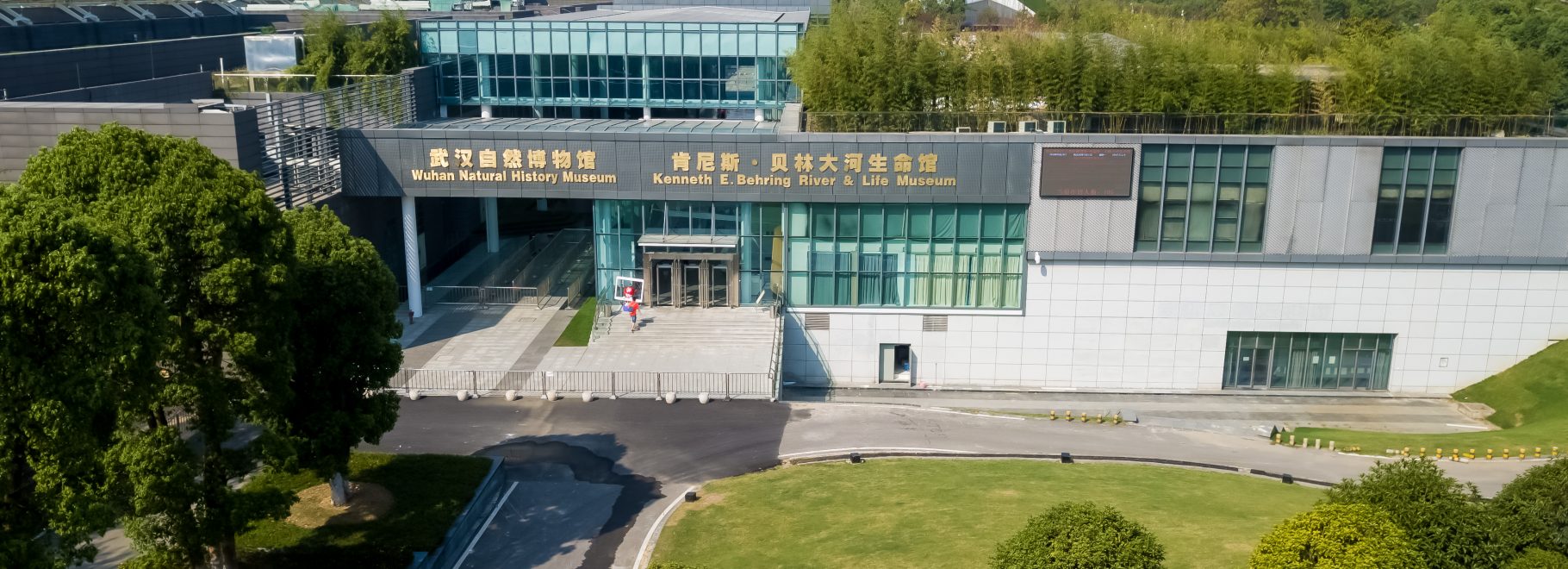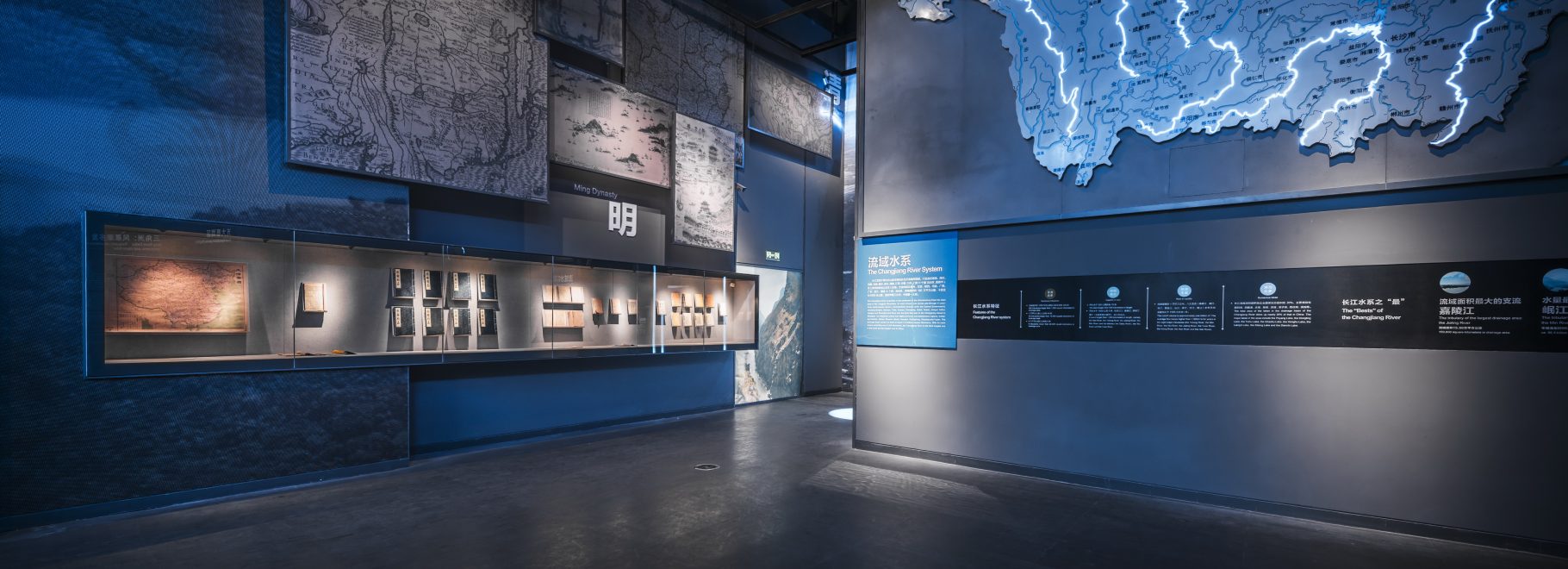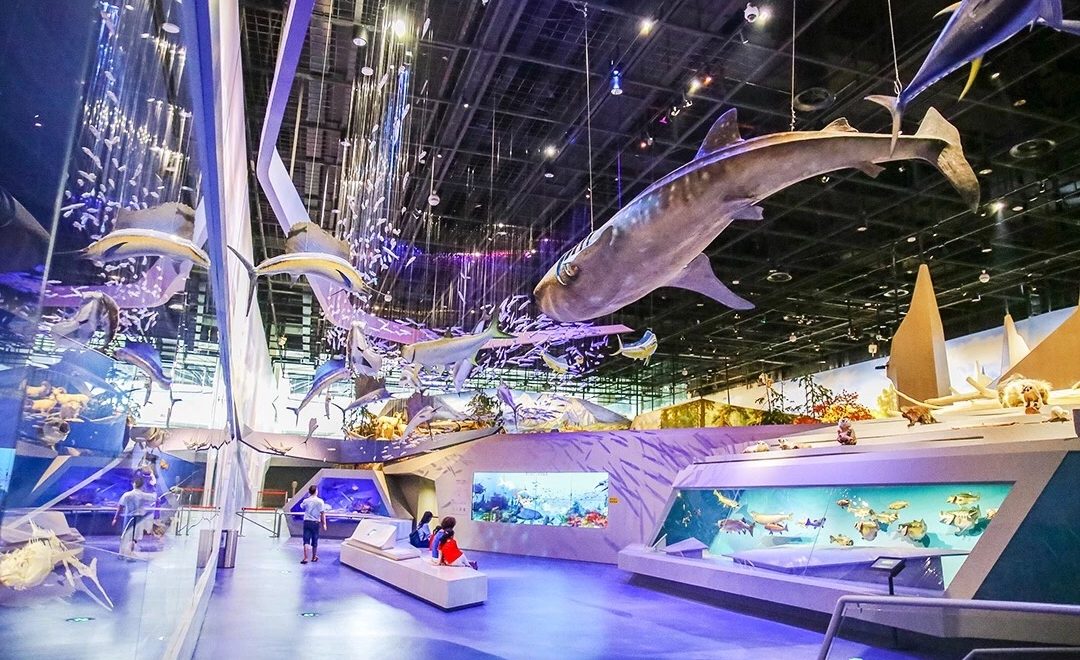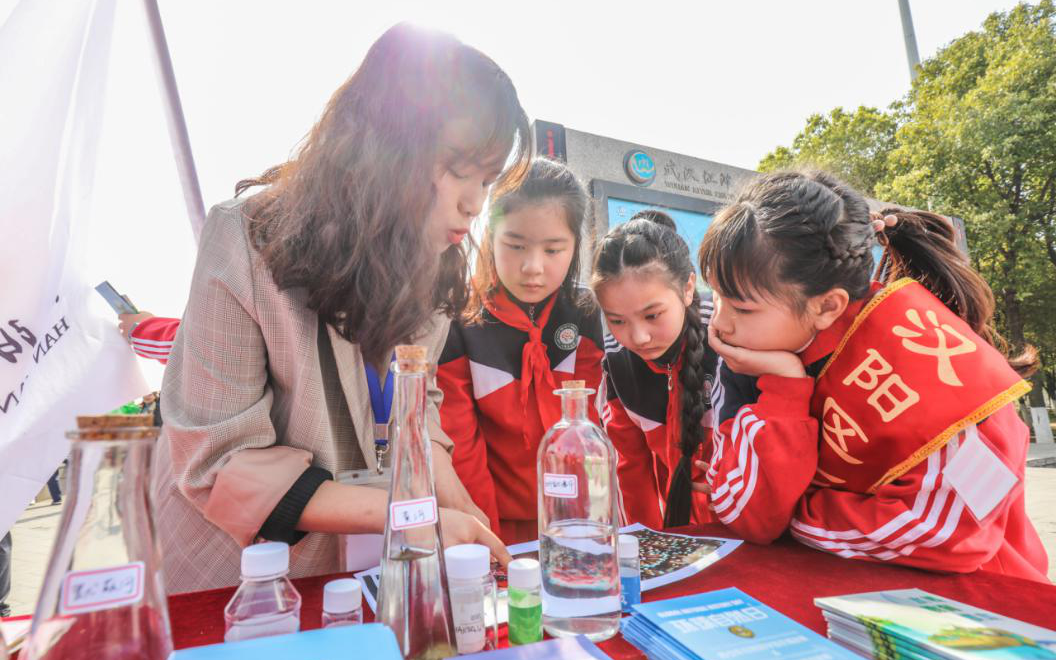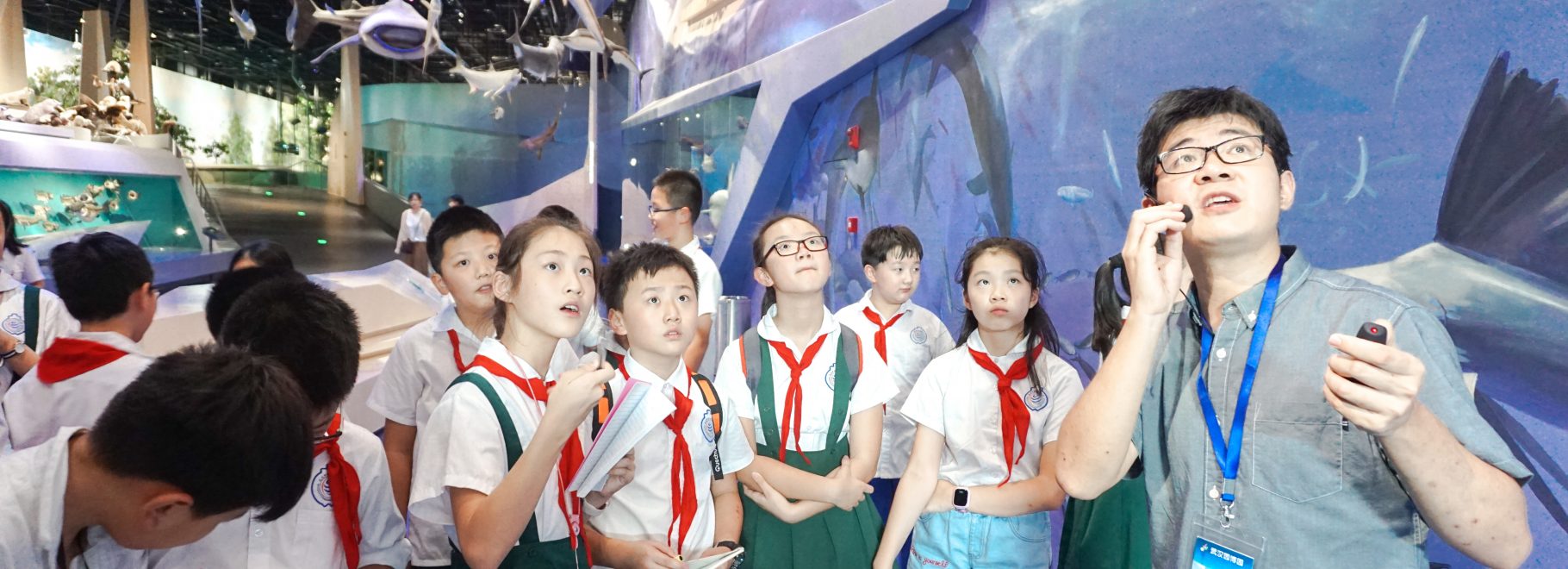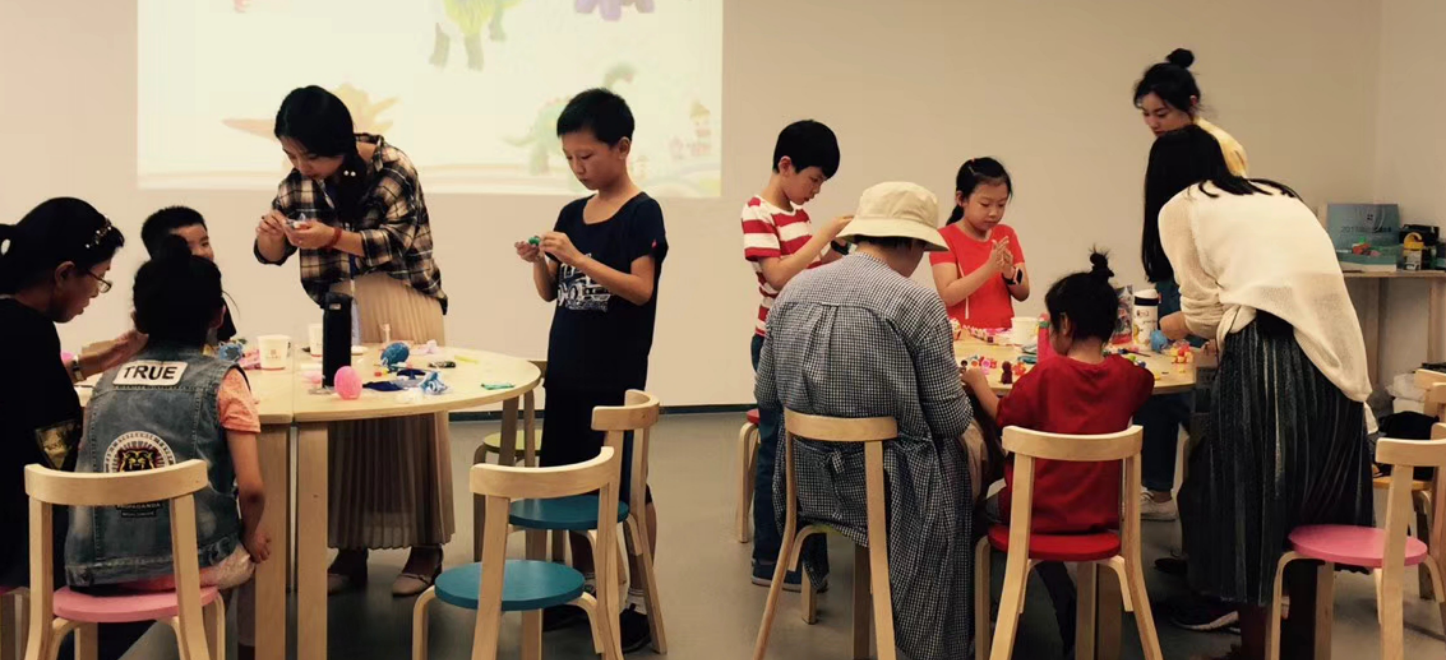The Changjiang Civilization Museum (Wuhan Natural History Museum)
The Changjiang Civilization Museum (Wuhan Natural History Museum) is a non-profitable public welfare cultural organization that collects, displays, and studies artifacts and specimens related to the natural ecology and historic civilization of the Changjiang River and even the world’s great rivers. It is located in the core area of Wuhan Garden Expo Park, north to the Jing Hill with the aroma of tea plantations and south to the Chushui Creek with glistening light of waves. In the broad sense, the Wuhan Natural History Museum consists of three parts, including the Changjiang Civilization Museum, Behring River & Life Museum, and the natural landscape of The 10th China (Wuhan) International Garden Expo (the Garden Expo park). The Garden Expo park and the Changjiang Civilization Museum had been completed and opened to public since September 25, 2015, while the Behring River & Life Museum has been officially opened to public since July 18th, 2018.
The Changjiang Civilization Museum
The Changjiang Civilization Museum was jointly established by the Municipal People’s Government of Wuhan, Changjiang Water Resource Commission of the Ministry of Water Resources, and Wuhan University. The construction was started on November 13th, 2013 and completed by September 25th, 2015. With a gross area of 31,000 square meters and an exhibition area about 12,800 square meters, the museum is divided into four parts, namely, the Preface, the Natural Hall, the Humanity Hall, and the Fantastic Changjiang Hall (a four dimensional experience center). So far, the Changjiang Civilization Museum has 12864 pieces of collections.
The Changjiang Civilization Museum offers a permanent exhibition themed “A song of the Changjiang River and a journey of civilization” to visitors. By focusing on the concept of “water nourishes human beings, human beings create civilizations, and civilizations integrate with ecology”, the museum intensively demonstrates the natural ecology and historic civilization of the Changjiang River using typical artifacts and specimens about the Changjiang Basin. Among the exhibits, there are specimens of endangered animals like giant panda and Chinese sturgeon, and artifacts representing different regional cultures along the Changjiang River, for example, the Bashu Culture, Jingchu Culture, and Wuyue Culture.
The Fantastic Changjiang Hall is considered a piece of innovation in Chinese museum sector. Where, visitors could experience the natural beauty and cultural essence in different regions and history periods of the Changjiang River during a 10-minute trip.
By the end of 2018, the Changjiang Civilization Museum had welcomed 2.6 million visitors free of charge. The museum has been awarded the “National Water Education Base” by the Ministry of Water Resources, and “National Middle and Primary School Study and Experience Base” by the Ministry of Education, and won the title of Provincial (Municipal) Patriotism Education Base of Hubei Province and Wuhan City respectively. The permanent exhibition themed “A song of the Changjiang River and a journey of civilization” won the “Best Award” in the 14th National Top Ten Museum Exhibitions (2016) and the “Best Award” in the 2016 Hubei Provincial Museum Top Six Exhibitions. It was well received by its peers and visitors. Particularly worth mentioning was that UNESCO highly recognized the outstanding contribution made by the Changjiang Civilization Museum and awarded it a certificate of appreciation.
Wuhan Natural History Museum • Behring River & Life Museum
The Wuhan Natural History Museum • Behring River & Life Museum is situated to the north of the Changjiang Civilization Museum. Its gross area is 29,000 square meters, of which, 18,000 square meters is the exhibition area. At the entrance of the museum, there is an honorary wall for Mr. Behring and a guide service area. The Museum has three floors. Its ground floor comprises a preface hall, a Vicissitudes of Rivers hall, a River & Life hall, and a collection storeroom and a specimen restoration room. The second floor comprises a River Meditation hall, an Exploring Great Rivers area, a Behring World Shop, and a coffee shop. On the third floor, there is a temporary exhibition hall, a science space, and the staff office. The permanent exhibition “a journey to great rivers and a concerto of lives” takes great rivers as the background, lives as the theme, animal specimens donated by Mr. Behring as the basis, makes the dialogues between the Changjiang River and the great rivers of the world as exhibition concept, focuses on important content of the great rivers, living things and human beings, makes full use of nearly 3000 pieces of paleontological, animal and plant specimens through modern means of exhibition, displaying geological background and the life history of rivers related to the great rivers, biodiversity, connection and difference of the world’s representative rivers, and the natural law of ecosystem succession change and life evolution, so as to raise people’s consciousness on the concern, love and protection of great rivers.
According to the national positioning of Wuhan City as a shipping center in the middle reaches of the Changjiang River, a large city in the Changjiang River economic belt and a core node city, the Wuhan Natural History Museum • Behring River & Life Museum will always insist on the people-oriented principle, shoulder responsibilities for the research and protection of natural resources, ecological environment and biodiversity, strive to build the museum one of the best natural science museums being first-class in China and in the world with rich connotation, distinctive features, and make its own contribution to meet people’s growing needs for a better life and realizing the Chinese dream.


